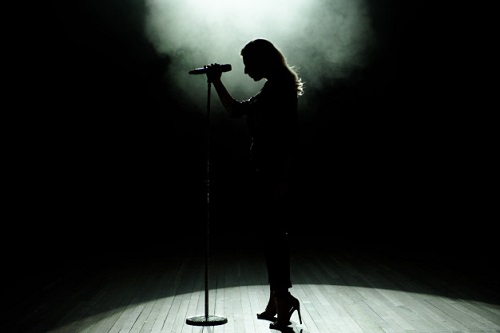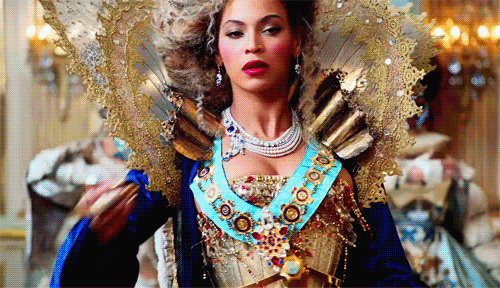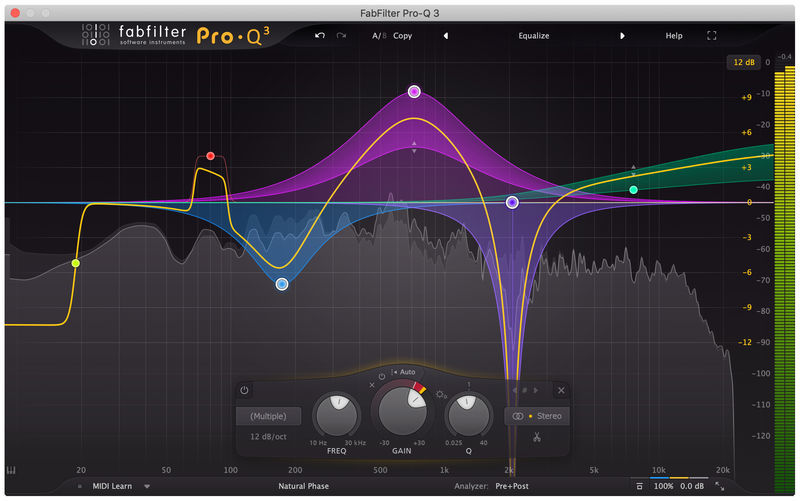Caution
First of all, although the title mentions reggaeton, it’s just a hook 😉 . In this blog we will go through dembow, rap and r&b among others, pointing out their rhythmic qualities and how the themes of the lyrics relate to the sensual or sexual “physicality” of their lyrics, another way of interpreting the logical foundations of each urban genre.
The physics of reggaeton
In this case we have a low, heavy and slow rhythm (standard BPM 90 as in rap). On the other hand, general equalisation with a tendency to bass. We therefore have two main aspects: slowness and forcefulness in the percussion beat. In this case, this is precisely where the key lies: the rhythm has a sensual and a sexual part. On the one hand it is sensual because the rhythm is slow, and on the other hand it is sexual because it is forceful and the bass is very present. So that we understand each other: the “sexual” in urban music is often interpreted as the sensation of the proportion of bass. We already have the elements needed to understand the subject: speed, matter and energy.
Karol G
An example that supports this idea about the rhythm of reggaeton is this classic track by Karol G Punto G, in which romantic phrases abound (“estoy esperando por uno que me enamore/ a la vieja escuela que me mande flores”) and on the other hand sexual ones (“que me toque allá/que me toque ahí/ hasta que me encuentre espero ahí/ en el punto G”). As there is this double possibility in the relationship between rhythm and theme in the lyrics, there are themes in which the sexual content is more abundant, while in others the sensual abounds.
Often the producers who work for the best known artists of the genre edit the percussions according to the subject matter of the lyrics, and especially by the types of bass drums, so that if the lyrics are sexual, we will find bass drum sounds with more presence, more intense, with more tonal punch and with more intensity in the treble range.
Other models of physics in reggaeton
However, in the more romantic reggaeton tracks the drums are lighter, with less information, as in Maluma’s Felices los 4 or Amigos con derechos in collaboration with Reik.
An example of more powerful bass drums in more sexually themed tracks could be this Shaky shaky by Daddy Yankee or Fuego by Ozuna.
If we focus exclusively on the weight/volume of the instruments beyond the percussion, we can find cases such as rap, a genre in which there are even some grooves in mid-frequency synths that slow down their rhythm and arrive late to each beat of the beat (obviously intentionally, as a delay). The rhythm in rap is always “fat” and heavy, we always talk about a fat sound, so it is logical that it drags to move, similar to the case of reggaeton (slow, heavy and demolishing).
Relativity made sound design
Look, this is pure physics, Einstein’s theory already said so. The energy of each beat depends on its matter, which is why hiphop and reggaeton are so heavy and bass-heavy (the bass wave has the widest phase in the whole frequency range), and the rhythmic and punchy nature of the beat corresponds to this. All these characterisations of the different genres are peculiarities that we have built up because, although there is always an important dose of feeling in the music, we also conceive it in a logical way.
A funk-filled example
Take a look at this track by the great Jacob Collier, from the break at 3:17 onwards, when everything changes and it becomes funky and hip-hop to the max. The rhythm is then heavy, slow. The synthesizer that moves in medium frequencies (analogue polysaw type sound) does not go with the rhythm, it keeps a Groove that alters and slows it down, so it doesn’t arrive in time to some of the pulses.

Anomalie
There are hiphop tracks that represent this rather more explicitly, such as Velours by Anomalie, in which the leads and some synths also sound out of time and arrive late. They are very heavy sounds, very full of information, very elaborate and voluminous that, worked through layering techniques, sampling and other ways of superimposing/cutting/creating sound information, have a rhythm that represents their subject matter on an interpretative level.
And at fast paces?
But let’s put ourselves for a second in a radically opposite case: if you are playing in a swing band, which is a genre that usually has a light and fast rhythm, it would not seem coherent for you to slow down as it is done in these rap synths, because the fast rhythm would drag you down and it would have no logic on an artistic level, it is a speech without coherence, it would normally not express much.
However, in slower genres, the fact that an instrument as lyrical as a monophonic lead (to give an example) moves slowly and arrives late to some pulses, can be interpreted as a sensual discourse (not necessarily understood as what precedes the sexual aspect, but rather as something that simply magnetises or attracts us).
Dembow
This genre is to reggaeton what ska is to reggae. While reggae was a slowdown after the invention of ska due in part to the Rastafarian religion and access to nervous system depressant drugs that relaxed (cannabis) and slowed down absolutely everything, dembow is simply a rhythm just like reggaeton but usually faster due to the need to dance or groove to lighter rhythms or twerk to rhythms that correspond more to a quick shake of the buttocks.
The sounds also sound less heavy, give a less dense feel and everything is less bass-heavy and generally less information-heavy. Within the percussion the snare drums are sharp and simple, the bass drums round and with a very fast attack and cadence so that the tail of each percussive sound disappears before the next sound (the bass, which also tends to be very smooth and round) arrives. So everything seems lighter, faster and less loaded with percussive punch in the bass, because it needs to weigh little to move fast.
The bass drums and snares in reggaeton often also have a longer cadence, that is to say, the tail of the bass drum (which, as in dembow, merges with the bass) is much longer, because there is plenty of time to lengthen the trail of bass frequencies that it leaves in its wake and that are so seductive (until the snare arrives, also with a lot of bass and a lot of sound tail).
And metaphorically?
It can be said then that dembow has a more sexual than sensual rhythm, but while it shares some traits with reggaeton it is also lighter, and this is reflected in the lyrics: while the subject matter of reggaeton in some tracks is sexual and at the same time romantic (as is the case in the works of Dalex, Lunay, Sech and Ozuna among other reggaeton artists currently at the top) in the dembow of artists like Bad Gyal, the subject matter sometimes has sexual content but the stories they tell are often less focused on sexual encounters or the desire to sin, and apart from talking about it they also mention other events in a broader way than in reggaeton.
Bad Gyal
One example of many would be the song Hookah by the artist Bad gyal, which is about different nightclub stories. Well, in one of the verses the singer tells a story about a sexual encounter, but this only occupies one of the verses, although most of the lyrics are about the club, the habit of smoking cannabis, adventures in the VIP area of the discotheques, etc.
Club music
And now let’s move on to a totally different terrain. Precisely because of the nature of their movement and the physics involved, for genres like house and others like bumping, techno, etc, we would use words like “robotic” or “machine-like” (they sound like machines, like music made by robots). Obviously the intention behind this kind of music is that it sounds more machine-like than mainstream urban music, and in fact in the promotional images of house and techno songs and albums there are often futuristic robot-like things or machines lost in space.
These genres have a peculiar sonority because they are created with synthesizers and drum machines that are pure machine and surreal sound, but in a more daring way than others such as dembow, which sometimes has flute sounds or ethnic percussion (as in afro beat and other pseudo-exotic music within urban popular music).
In this particular case of house music, all sounds must be “quantized”. By quantized in music production, we mean “fitted” into the rhythm boxes of each DAW program, that is, exactly on the beat of each pulse, fitted into the second 0 of each beat. And this undoubtedly contributes to making everything sound so machine-like.
Here is a sample of the house discourse: marketing based on futuristic images and robotic style. Great track by Alok and Hugel.
Rhythm and blues
And to finish off, I would like to talk about one last genre that I can’t keep quiet about because it is one of the ones that represent me as a producer. You can see that with r&b something similar to hip hop happens. R&B works more on the sensual, and its rhythm is very serious but lacks punch, it lacks the forcefulness of what we understand as sexual in the collective imagination of urban music. The most purist r&b works are often all bass but very smooth, without very pronounced peaks in the waves of the instruments.
In this song by Miguel the lyrics deal with pre-encounter fantasies in a rather cursory way
Finally, I would like to clarify that obviously this whole concept of rhythm and themes does not extend to 100% of the music mentioned, especially because a huge part of urban music straddles different genres and the style itself often does not ask to understand its elements in this way. For example, some of Ariana Grande’s songs have r&b content but also gravitate a bit towards the trap genre, so they become a mix with the punch of trap and the smooth bass of r&b, so there are many more possibilities (textures of distortion, roundness, roughness… associated both with marginal discourses or violence and with romanticism, relaxation, etc.).
An example that shares physics
The same happens in some of the songs by David Bisbal, a Spanish artist who has spent his entire career selling a pseudo-exotic image of flamenco mixed with reggaeton in a kind of Hispanic mestizo pop, a very interesting product in which the characteristic bass of reggaeton is combined with a facelift based on rounder and smoother but also more forceful sounds that share the frequency spectrum with many instruments (several Spanish guitar lines, electric guitars with a bit of distortion, etc.).
As the bass of reggaeton shares space with the lyricism of the Spanish guitar, it is logical that songs like Pedirte perdón, this famous Latin hit in which the subject matter is exclusively romantic and not sexual, are created. With Antonio José it is similar, his songs are flamenco-type but sometimes with some dembow, but being a mix of genres, the subject matter is more refined than in reggaeton and never so explicit in the sexual aspect: rather the lyrics abound in themes of relationships or rejection..
And that’s all for today! I leave you other blogs of the style and remember that you can buy a rap, trap, dembow, pop, r&b, dembow, reggaeton … instrumental! A la carte.






